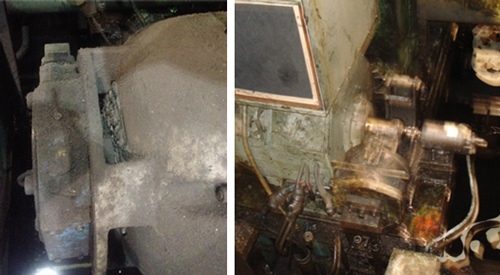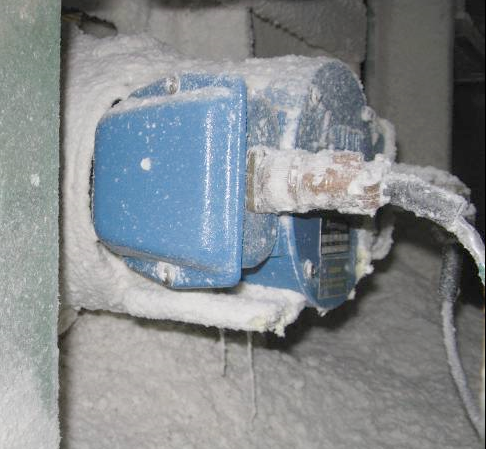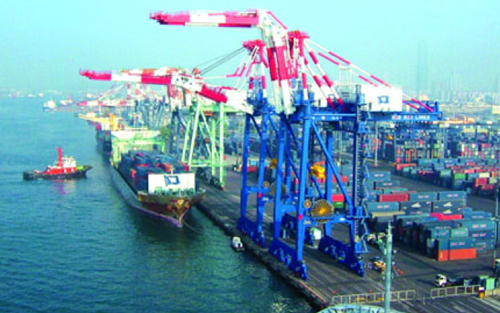This blog will introduce various metals industry encoder applications and the environmental and mechanical challenges they present.
Metals Encoder Application Challenges
Topics: Metals
Understanding Metals Industry Position Feedback Devices
Understanding Metals Industry Position Feedback Devices
This blog will introduce the three main types of position feedback devices from a historical perspective and discuss their uses in metals processes.
Topics: Metals
Understanding Metals Industry Speed Feedback Devices
Speed Sensors
The Dictionary.com definition for Tachometer:
[ta-kom-i-ter, tuh-]
any of various instruments for measuring or indicating velocity or speed
So tachometers are speed measurement devices. Their use in the metals industry goes back decades to the development of analog drive control systems.
This blog will introduce the three main types of speed feedback devices from a historical perspective and discuss their uses in metals processes.
Topics: Metals
Understanding Metals Industry Rotary Sensors
They are called many things: tachometers, tachos, tach-generators, pulse generators, resolvers, encoders, incremental encoders, absolute encoders, rotopulsers, selsyns, the list seemingly goes on and on. How does the metals industry electrical professional know what all these devices are and what kinds he has or needs? In the first of a three-part series, this blog will introduce the main metals industry rotary motion sensors, speed and position.
Topics: Metals
What Kills Encoders in Pulp & Paper Mill Environments
Bearings and seals are the main failure items for any encoder in a mill environment today. Lip seals, shaft seals and bearings all have static surfaces in contact with rotating surfaces. Gradually these seal points will wear or break down and allow material to pass into the encoder housing and contaminate optics and short electronics. As bearing surfaces wear, radial movement increases at both seal surfaces, accelerating failure and causing optical path misalignment. Eliminating the bearings and seals from your encoder applications will drastically lengthen the life of your feedback devices.
Topics: Pulp and Paper
Wind Systems Magazine's Q&A with Brian Winter
Wind Systems Magazine interviewed Nidec Avtron Encoders’ Product Manager Brian Winter about encoder trends in the wind industry.
or read it here:
Conversation: Brian Winter
Brian WinterEncoder Product Manager
Nidec Avtron Automation
Topics: Wind Power
How Stacker Cranes Benefit From Absolute Encoders
Overview

Topics: Absolute Encoders
How Truck Mounted Cranes Benefit From Absolute Encoders
Overview
Truck Mounted Cranes are an indispensable tool on many construction sites. The compact dimensions and mobility of the truck allow the crane to be driven to the work site and set into position. Although the crane may appear small on the truck, once the support system and telescopic mast are extended, it becomes an impressive piece of transport machinery. The operating range of the booms on these types of cranes was once much more restricted, but today, PLC controls and absolute encoder technology ensure that the boom can be pushed to its limits.
Absolute encoder technology is used on truck mounted cranes to increase the range and accuracy of positioning the boom, and to increase safety. Absolute encoders are used as part of the safety system that locks the crane automatically before the system reaches critical limits.
Topics: Absolute Encoders
Container Cranes Benefit From Reliable Absolute Encoders
Overview
Container Cranes are a common sight at ports. What's new is their improved automation to ensure higher performance and operator safety.
To ensure higher performance, OEMs install absolute encoders, typically 4 units:
- Each main hoist motor (x2)
- Trolley
- Boom (angle)
OEMs and end-users are depending on the absolute encoders--typically the main hoist encoder positions are compared in software--if there is any difference, the crane will shut down. Likewise, accurate boom angle and trolley position is critical. Errors can result in crane malfunctions or shutdowns.
Topics: Absolute Encoders
Crawler Cranes Benefit From Reliable Absolute Encoders
Overview

Crawler cranes are a common site on construction sites. What's new is their improved automation to ensure higher performance and operator safety.
To ensure higher performance, OEMs install absolute encoders, often on the winches for boom control and/or hook position.
Topics: Absolute Encoders








